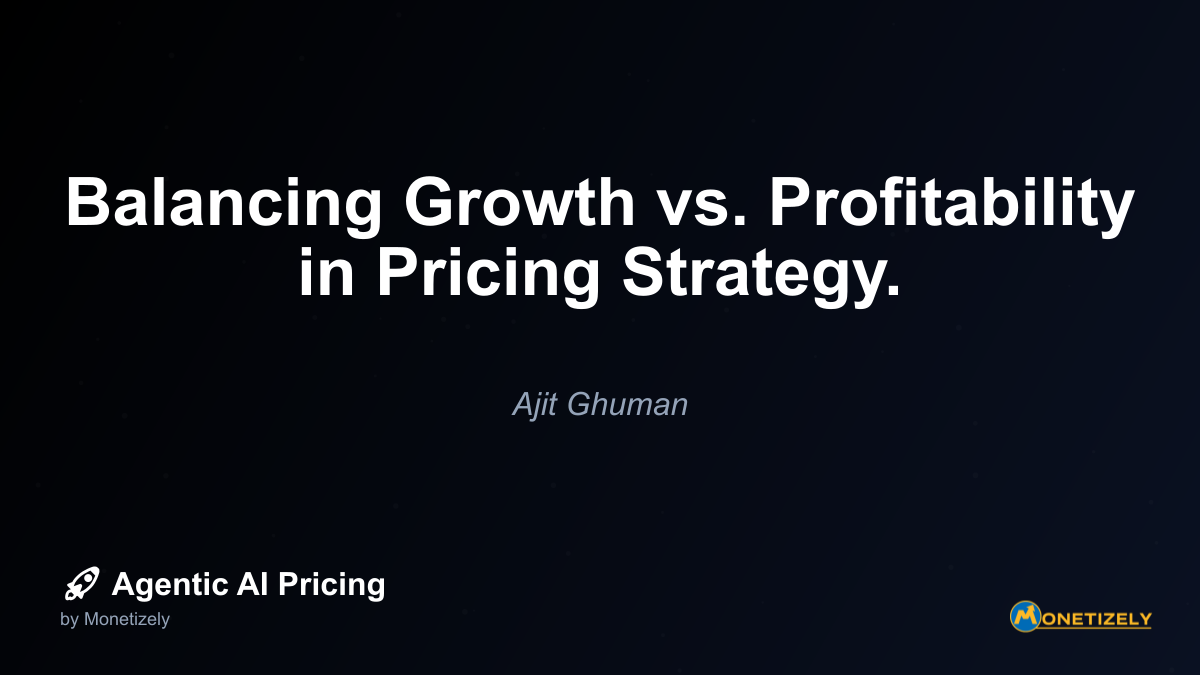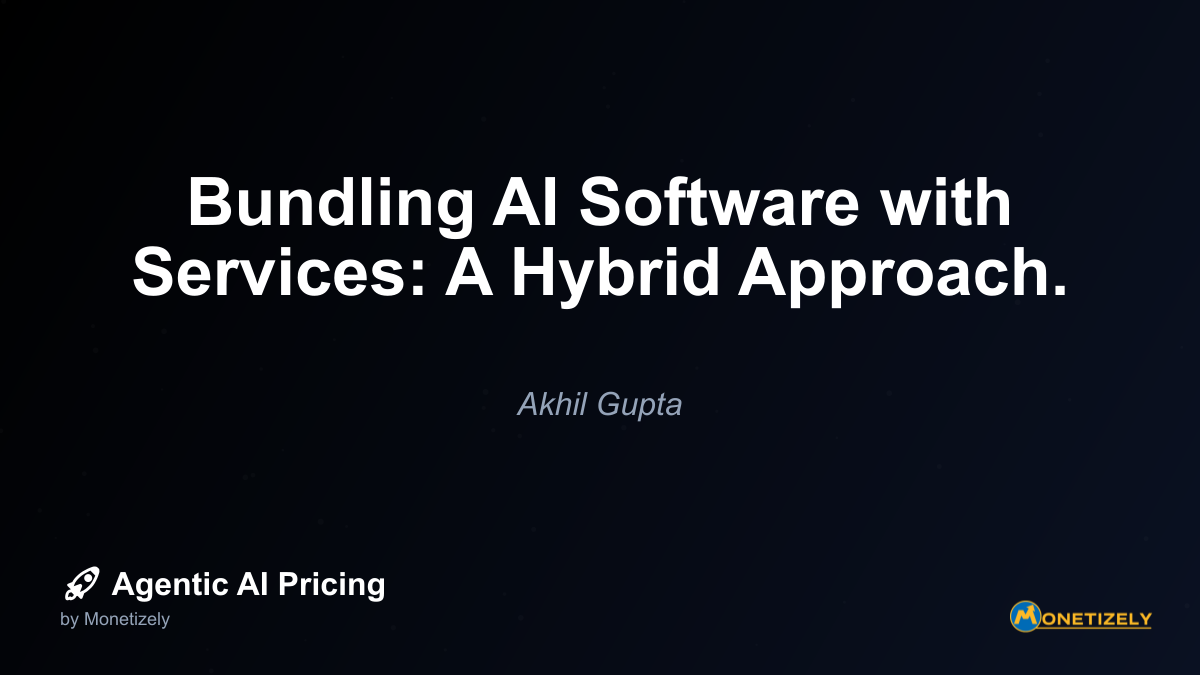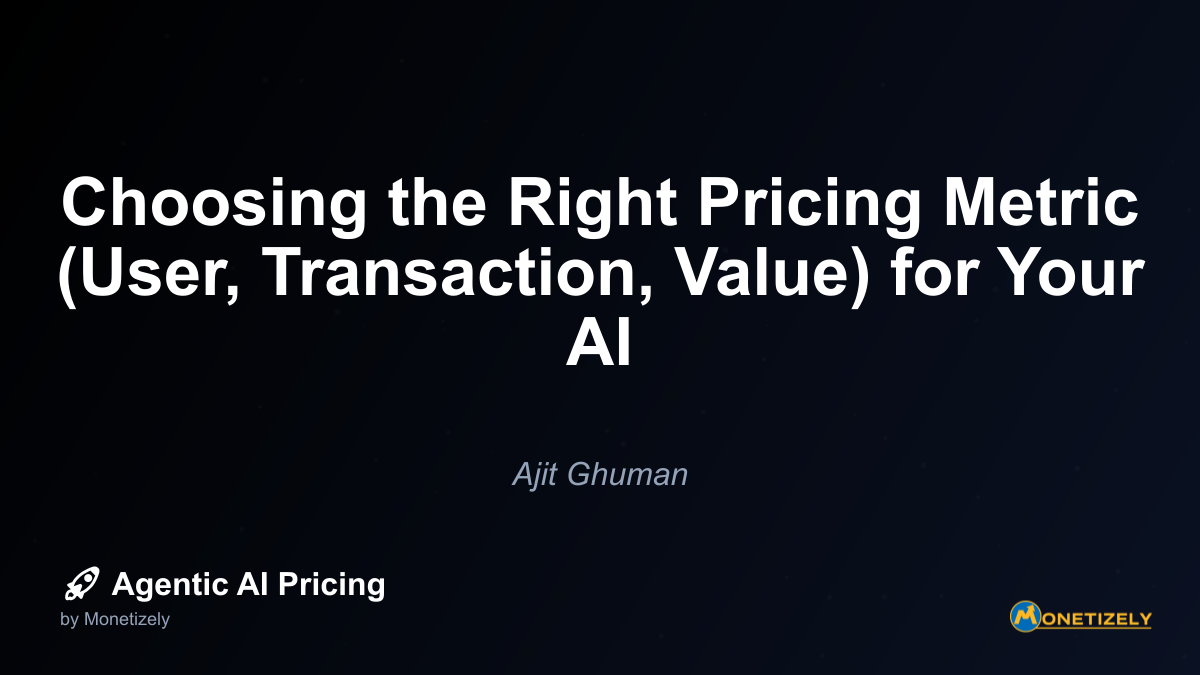· Akhil Gupta · Strategy & Planning · 5 min read
Pricing AI Platforms vs. AI Applications: Different Approaches.
AI and SaaS Pricing Masterclass
Learn the art of strategic pricing directly from industry experts. Our comprehensive course provides frameworks and methodologies for optimizing your pricing strategy in the evolving AI landscape. Earn a professional certification that can be imported directly to your LinkedIn profile.

For a deeper exploration of value-based pricing approaches for AI applications, our comprehensive guide Creating Value-Based Pricing Models for Agentic AI provides actionable frameworks for maximizing return on investment.
Vertical-Specific Considerations
AI applications often target specific industry verticals, each with unique pricing expectations and value perceptions. Successful pricing strategies account for:
- Industry benchmarks for similar solutions
- Budget cycles and purchasing processes
- Regulatory considerations that may impact adoption
- Competitive landscape within the vertical
- Industry-specific ROI metrics that resonate with buyers
For example, AI applications in healthcare might emphasize patient outcomes and regulatory compliance, while financial services applications might focus on risk reduction and audit capabilities.
Balancing Automation and Human Support
Many AI applications struggle with determining the right balance between pure automation and human-in-the-loop support. This balance has significant pricing implications:
- Fully automated solutions offer higher margins but may face capability limitations
- Human-augmented AI provides better outcomes but at higher delivery costs
- Hybrid models with tiered human involvement can optimize the value-cost equation
Pricing strategies must account for these delivery models, often creating tiers based on the level of human involvement or expertise provided.
Transitioning Between Models: Platform to Application
Many AI companies begin with platform offerings before developing specialized applications. This transition requires careful pricing recalibration:
- Segment-specific packaging that addresses vertical use cases
- Solution-oriented messaging that emphasizes outcomes
- Value-based pricing that captures more of the created value
- Simplified buying experience for non-technical purchasers
- ROI-focused sales enablement materials
Companies like Salesforce have mastered this transition, evolving from platform-centric offerings to industry-specific solutions with value-based pricing models.
Comparing Platform and Application Pricing Approaches
| Aspect | AI Platform Pricing | AI Application Pricing |
|---|---|---|
| Primary Value Driver | Developer productivity & flexibility | End-user outcomes & ROI |
| Dominant Model | Usage-based with tiers | Subscription with feature tiers |
| Key Metrics | API calls, tokens, compute resources | Users, features, business outcomes |
| Pricing Communication | Technical documentation, calculators | Value proposition, ROI calculators |
| Sales Approach | Developer-led, product-led growth | Solution selling, consultative approach |
| Competitive Factors | Performance, flexibility, documentation | Features, ease of use, integrations |
| Pricing Psychology | Pay-as-you-go, low barrier to entry | Value-based, outcome-focused |
Implementation Best Practices
For AI Platforms
- Start with simple, transparent pricing that developers can easily understand
- Provide generous free tiers to encourage experimentation
- Offer clear documentation on how usage is calculated and billed
- Create pricing calculators to help estimate costs
- Implement usage monitoring tools to help customers optimize spending
- Consider volume discounts for high-usage customers
- Develop enterprise tiers with additional security and support features
- Create specialized pricing for high-potential verticals or use cases
For AI Applications
- Focus on value-based messaging that emphasizes outcomes over technology
- Create feature-based tiers that align with customer segments
- Offer proof-of-value trials to demonstrate ROI before purchase
- Develop ROI calculators specific to your value proposition
- Consider industry-specific packaging for key verticals
- Implement annual pricing discounts to improve cash flow and retention
- Test premium support tiers for customers requiring higher touch
- Explore outcome-based guarantees for high-confidence scenarios
Common Pitfalls to Avoid
Platform Pricing Mistakes
- Overly complex pricing models that confuse developers
- Unpredictable cost structures leading to “bill shock”
- Insufficient free tiers that discourage experimentation
- Premature optimization for revenue over ecosystem growth
- Neglecting enterprise requirements in pricing structure
- Failing to account for scaling costs as usage grows
Application Pricing Mistakes
- Technology-centric messaging that fails to communicate value
- Pricing based on development costs rather than delivered value
- Overly complex feature matrices that confuse buyers
- Insufficient tier differentiation that limits upgrade potential
- Ignoring industry-specific value drivers in pricing communication
- Failing to align sales compensation with pricing strategy
Future Trends in AI Pricing
As the AI landscape continues to evolve, several emerging trends will shape pricing strategies for both platforms and applications:
1. Outcome-Based Guarantees
Both platforms and applications will increasingly offer performance guarantees tied to specific outcomes, with pricing contingent on achieving promised results. This trend will accelerate as AI capabilities become more reliable and predictable.
2. Dynamic Pricing Based on Value Creation
AI systems capable of measuring their own impact will enable more sophisticated value-based pricing models that dynamically adjust based on the actual value delivered to customers.
3. Ecosystem-Based Pricing
As AI ecosystems mature, pricing will increasingly account for network effects and ecosystem participation, with incentives for contributing to platform growth through data sharing or model improvements.
4. Vertical-Specific Pricing Optimization
Both platforms and applications will develop increasingly sophisticated vertical-specific pricing strategies that account for industry-specific value drivers, buying processes, and competitive dynamics.
5. Consumption Efficiency Incentives
As AI usage grows, pricing models will increasingly reward efficient consumption through discounts or credits for optimized prompts, reduced token usage, or more efficient model selection.
Conclusion: Strategic Alignment is Key
The distinction between AI platforms and applications represents more than just a technical difference—it fundamentally shapes how customers perceive and derive value from AI solutions. Successful pricing strategies must align with these different value perceptions to maximize both adoption and revenue potential.
For platforms, pricing should prioritize developer experience, experimentation, and scaling economics, typically through usage-based models with predictable tiers. For applications, pricing should emphasize end-user outcomes and business value, typically through subscription models with feature-based differentiation.
In both cases, the most successful pricing strategies will be those that deeply understand customer value perception, align pricing metrics with value delivery, and create natural expansion paths as customer needs evolve. By recognizing the fundamental differences between platform and application pricing approaches, AI companies can develop more effective monetization strategies that support sustainable growth while delivering compelling customer value.
As the AI landscape continues to rapidly evolve, regular reassessment of pricing strategies against changing market conditions, competitive dynamics, and customer expectations will be essential for maintaining optimal pricing approaches for both platforms and applications.
Co-Founder & COO
Akhil is an Engineering leader with over 16+ years of experience in building, managing and scaling web-scale, high throughput enterprise applications and teams. He has worked with and led technology teams at FabAlley, BuildSupply and Healthians. He is a graduate from Delhi College of Engineering and UC Berkeley certified CTO.
Pricing Strategy Audit
Let our experts analyze your current pricing strategy and identify opportunities for improvement. Our data-driven assessment will help you unlock untapped revenue potential and optimize your AI pricing approach.




